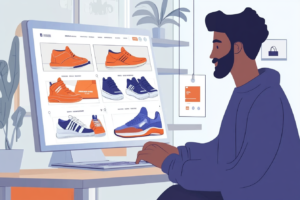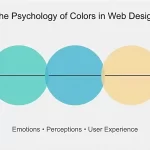Hey there, tech fans and internet explorers! Ready to pull back the curtain on the wizardry of the internet? Buckle up, because we’re about to embark on a wild ride through the wonderland of choice architecture in the digital economy. By the time we’re done, you’ll be seeing the matrix in every click, swipe, and scroll!
The TL;DR for Chronically Rushed Readers:
-
Your digital environment secretly shapes your choices
-
Default settings, color psychology, and nudges influence decisions
-
Too many choices can lead to decision paralysis
-
Dark patterns are the digital equivalent of sketchy sales tactics
-
Ethical design and user empowerment are gaining traction
-
You can become a choice architecture ninja with awareness and tools
Now, let’s dive deeper into this rabbit hole, shall we?
The Invisible Puppet Masters of the Internet
Picture this: You’re innocently browsing for a new pair of sneakers, and suddenly – BAM! – you’ve got a cart full of socks, shoelaces, and a fancy shoe horn. How did that happen? Welcome to the magical world of choice architecture, my friend!
In the digital realm, choice architecture is like having a really pushy (but charming) salesperson living inside your device. It’s the art of designing our online environments to nudge us towards certain decisions. And let me tell you, these digital puppet masters are playing us like fiddles!
Pro Tip: Next time you’re about to hit that “Buy Now” button, take a moment to ask yourself, “Do I really need this, or am I just being expertly manipulated?” Your wallet will thank you!
The Good, the Bad, and the Downright Sneaky
Let’s face it, folks – the internet is like a giant casino, and we’re all walking around with our wallets open. But instead of flashy lights and free drinks, we’ve got dark patterns and nudge theory. It’s a brave new world out there, and it’s high time we wise up to the ways our favorite digital playgrounds are playing us.
The Lazy Person’s Best Friend: The Power of Default
Remember that time you signed up for a “free trial” and suddenly found yourself with a year-long subscription to artisanal toe socks? Yeah, that’s the sneaky power of default options at work.
Default settings exploit our natural tendency to go with the flow. It’s like trying to resist that last slice of pizza – technically possible, but who are we kidding?
Fun Fact: Studies show that organ donation rates can differ by over 90% between countries, largely due to whether the default option is to be a donor or not. Talk about the power of lazy decision-making!
The Default Dilemma: Convenience vs. Control
Defaults are the digital equivalent of that friend who always orders for you at restaurants. Sometimes it’s a lifesaver, other times you end up with anchovy pizza.
Do: Regularly audit your default settings across all your digital accounts.
Don’t: Assume defaults are harmless – they’re often designed to benefit the company, not you.
Harnessing the Default Effect for Good
But here’s the twist – you can use the power of defaults for your own benefit:
-
Set your browser’s default search engine to a privacy-focused option.
-
Change your phone’s default apps to ones that align with your goals (e.g., a meditation app instead of social media).
-
Use financial apps that default to saving rather than spending.
Pro Tip: Create your own “life defaults” – pre-made decisions for common situations. It’s like meal prepping, but for your choices!
The Paradox of Choice: When Too Much is Too Much
Ever spent an hour scrolling through Netflix, only to give up and watch “The Office” for the 17th time? Congratulations, you’ve just experienced the paradox of choice!In the digital world, choice architects combat this by carefully curating and presenting information. It’s like having a personal shopper for your decision-making – except this one’s trying to sell you something.
Reality Check: As of 2024, the average person makes over 35,000 decisions a day. No wonder we’re all so tired!
The Goldilocks Zone of Choices
Too few choices feel restrictive, too many lead to decision paralysis. The trick is finding that “just right” sweet spot
Do: When creating content or designing interfaces, aim for 3-7 options to avoid overwhelming your audience.
Don’t: Mistake abundance for value. More isn’t always better when it comes to choices.
Taming the Choice Beast
Here are some strategies to wrangle the paradox of choice in your digital life:
-
Use curation tools and apps to filter content based on your preferences.
-
Set decision-making time limits for online shopping or content browsing.
-
Create personal decision rules (e.g., “If I can’t decide between two items, I don’t need either”).
Fun Challenge: Try a “Decision Diet” – limit yourself to three options for every choice for a week. See how it affects your stress levels and productivity!
The Nudge: Digital Cheerleaders in Disguise
Nudges are the gentle pushes that guide us towards certain decisions without restricting our freedom. In the digital world, they’re everywhere:
-
The progress bar on your profile completion (because who can resist filling that last 2%?)
-
The “Only 1 left in stock!” warning (cue panic buying)
-
The “95% of users choose this option” social proof (because FOMO is real, folks)
These little nudges are like digital cheerleaders, encouraging you to take action without you even realizing it. It’s manipulation, but make it cute!
The Good, The Bad, and The Nudgy
Not all nudges are created equal. Some are like that friend who encourages you to go to the gym, while others are more like the buddy who talks you into “just one more” drink.
Do: Look for apps and services that use nudges to support your goals and values.
Don’t: Ignore the cumulative effect of small nudges – they can add up to big changes over time.
Nudging Yourself to Success
Why let apps have all the fun? Create your own positive nudges:
-
Set up calendar reminders for important but easy-to-forget tasks.
-
Use visual cues like desktop wallpapers to reinforce your goals.
-
Gamify your habits with apps that reward consistency.
Pro Tip: Create a “nudge network” with friends. Agree to send each other encouraging reminders or challenges to support your collective goals.
The Ethical Nudge Dilemma
As we become more aware of digital nudges, a new question arises: When does helpful guidance become manipulation?
Food for Thought: If a health app nudges you to take more steps, is it empowering you or exploiting your insecurities? The line isn’t always clear.
By understanding these powerful tools of choice architecture, you’re better equipped to navigate the digital landscape. Remember, awareness is your superpower in the world of defaults, choices, and nudges!
The Psychology of Color: Your Screen is Playing Mind Games
Ever wonder why “Buy Now” buttons are often bright and eye-catching? That’s choice architecture at work, baby! Colors play a huge role in guiding our digital decisions.
For instance, red can create a sense of urgency (hello, clearance sales!), while blue can make us feel calm and trustworthy (looking at you, Facebook). It’s like your screen is giving you subliminal messages, but in a totally legal and mostly ethical way.
Pitfall Alert: Don’t let pretty colors fool you into making poor decisions. A beautifully designed scam is still a scam!
Mobile Madness: Swipe Right for Choice Architecture
With the rise of mobile apps, choice architecture has gone into overdrive. The limited screen space forces designers to be even more strategic about how they present options.
Take dating apps, for example. The simple swipe mechanic isn’t just fun; it’s a masterclass in choice architecture. By reducing complex human connections to a binary choice, these apps make decision-making addictively easy. Who knew finding love could be as simple as choosing between paper or plastic at the grocery store?
The Dark Side of the Force (AKA Dark Patterns)
Now, let’s talk about the elephant in the room – dark patterns. These are the shady design practices that trick users into making decisions they might not otherwise make. It’s like the digital equivalent of that used car salesman who conveniently “forgets” to mention the car’s history of spontaneous combustion.
Some common dark patterns include:
-
The “Hotel California” effect: You can check out any time you like, but you can never leave (without clicking through 17 pages of “Are you sure?”)
-
The “Oops, I Did It Again” maneuver: When that tiny “X” to close a pop-up is smaller than an ant’s toenail
-
The “FOMO Factory”: Limited time offers that are about as limited as my ability to resist a good cheese platter
Fun Fact: The term “dark pattern” was coined in 2010 by UX designer Harry Brignull. He’s like the Indiana Jones of the digital world, but instead of hunting for ancient artifacts, he’s exposing shady design practices.
The Ethical Tightrope: Balancing Act in the Digital Age
Now, before we go all “torch and pitchfork” on choice architecture, let’s remember that not all nudges are created evil. Some are like that friend who gently reminds you to wear sunscreen – annoying, but ultimately looking out for your best interests.
The key is finding the balance between helpful guidance and manipulative trickery. It’s like walking a tightrope while juggling flaming torches and reciting the alphabet backward – tricky, but not impossible.
As Dr. Shlomo Benartzi, a behavioral economist at UCLA, puts it: “Choice architecture is neither inherently good nor bad. It’s a tool, and like any tool, its impact depends on how we use it.”
The societal implications of choice architecture in the digital realm are profound. On one hand, it can be used to promote healthier habits, encourage savings, or make complex decisions more manageable. On the other hand, it can be exploited to manipulate consumers, invade privacy, or reinforce harmful behaviors.
Reality Check: As of 2024, regulations like GDPR in Europe and the CCPA in California are cracking down on deceptive design practices. But let’s be real – for every dark pattern that gets squashed, another pops up like a digital game of whack-a-mole. The battle for ethical design is ongoing, and we all have a role to play.
Becoming a Choice Architecture Ninja
So, how do we navigate this labyrinth of digital decision-making without losing our minds (or our life savings)? Here are some tips to level up your choice architecture awareness:
-
Embrace your inner skeptic: If a deal seems too good to be true, it probably is. Channel your inner grumpy cat and question everything.
-
Take the scenic route: Don’t always go for the default option. Sometimes, the road less traveled leads to better privacy settings and fewer unwanted subscriptions.
-
Play “Spot the Dark Pattern”: Turn it into a game! First one to identify a manipulative design trick wins (the prize is keeping your hard-earned cash).
-
Educate yourself: Stay up-to-date on the latest digital trickery. Knowledge is power, and in this case, it’s also money in your pocket.
-
Spread the word: Share your newfound wisdom with friends and family. Be the Morpheus to their Neo in the matrix of online manipulation.
Tools of the Trade: Empowering the Digital Consumer
Want to take your choice architecture defense to the next level? Here are some tools and browser extensions to help you combat manipulative design:
-
Privacy Badger: Blocks invisible trackers and spying ads
-
uBlock Origin: An efficient ad-blocker that also helps identify dark patterns
-
DuckDuckGo Privacy Essentials: Protects your privacy and helps you understand website tracking practices
-
F.B. Purity: Customizes your Facebook experience and removes annoying elements
Remember, these tools are just the beginning. The best defense is an informed and critical mind!
The Bright Side of the Moon
But fear not, dear reader! It’s not all doom and gloom in the digital realm. Many companies are embracing ethical design practices, creating user experiences that are both delightful and respectful. It’s like finding a unicorn in a field of horses – rare, but magical when you do.
Take Duolingo, for example. They use gamification and nudges to encourage language learning, but always with the user’s best interests at heart. Or consider how some fitness apps use choice architecture to promote healthier habits without resorting to shame or manipulation.
Pitfall to Avoid: Don’t become so paranoid that you miss out on genuinely good online experiences. Not every website is out to get you – some just want to help you find the perfect pair of pants.
The Future of Choice Architecture: A Brave New Digital World
As we peer into the crystal ball of tech trends, the future of choice architecture looks both exciting and slightly terrifying. Here’s a sneak peek at what might be coming our way:
-
AI-Powered Personalization: Imagine a world where AI algorithms understand your preferences so well that they can tailor choice architecture to your individual psychology. It’s like having a personal digital butler, but one that knows you better than you know yourself.
-
Virtual and Augmented Reality: As VR and AR become more mainstream, choice architects will have entirely new dimensions to play with. Picture making purchasing decisions in a fully immersive virtual store, where every element is designed to influence your choices.
-
Voice-Activated Choices: With the rise of smart speakers and voice assistants, choice architecture is entering the auditory realm. How will designers nudge us when we can’t see the options?
-
Ethical AI and Transparent Algorithms: As awareness grows, we might see a push for more transparent and ethical AI in choice architecture. Imagine being able to see exactly how and why certain options are being presented to you.
-
Biometric Feedback: Future devices might use your heart rate, eye movements, or even brain waves to gauge your reactions and adjust choice architecture in real-time. Creepy or cool? You decide!
Your Mission, Should You Choose to Accept It
As we wrap up our whirlwind tour of choice architecture in the digital economy, remember this: You have the power to shape your online experience. By staying informed, questioning designs that feel off, and supporting ethical practices, you’re not just protecting yourself – you’re helping create a better digital world for everyone.
So, what’s your next move? Here are some actionable steps to take your newfound knowledge and put it into practice:
-
Conduct a “dark pattern audit” of your favorite websites and apps. How many can you spot?
-
Experiment with changing default settings on your devices and online accounts. You might be surprised at what you discover!
-
Share this article with friends and family to spread awareness about choice architecture.
-
Support companies and platforms that prioritize ethical design practices.
-
Consider learning more about UX design and psychology to deepen your understanding of these concepts.
Remember, in the digital world, knowledge isn’t just power – it’s your superpower. Use it wisely!
Test Your Choice Architecture IQ
Think you’ve got what it takes to spot sneaky design? Take our quick quiz to test your choice architecture awareness!
-
You’re signing up for a new service and notice a pre-checked box for a “premium” subscription. What’s this an example of?
a) Dark pattern
b) Ethical nudge
c) User empowerment -
A website uses a bright red “Buy Now” button next to a grey “Learn More” button. What principle is at play here?
a) Color psychology
b) Paradox of choice
c) Default bias -
An app sends you frequent notifications about “limited time offers.” What’s this tactic called?
a) FOMO factory
b) Hotel California effect
c) Sunk cost fallacy
(Answers: 1. a, 2. a, 3. a)
How did you do? Share your score and challenge your friends to beat it!
So go forth, brave digital warriors! Armed with your newfound knowledge, you’re ready to face the wild west of the internet. May your clicks be intentional, your subscriptions wanted, and your online experiences delightful.
Until next time, stay savvy, stay skeptical, and may the choice (architecture) be ever in your favor!









